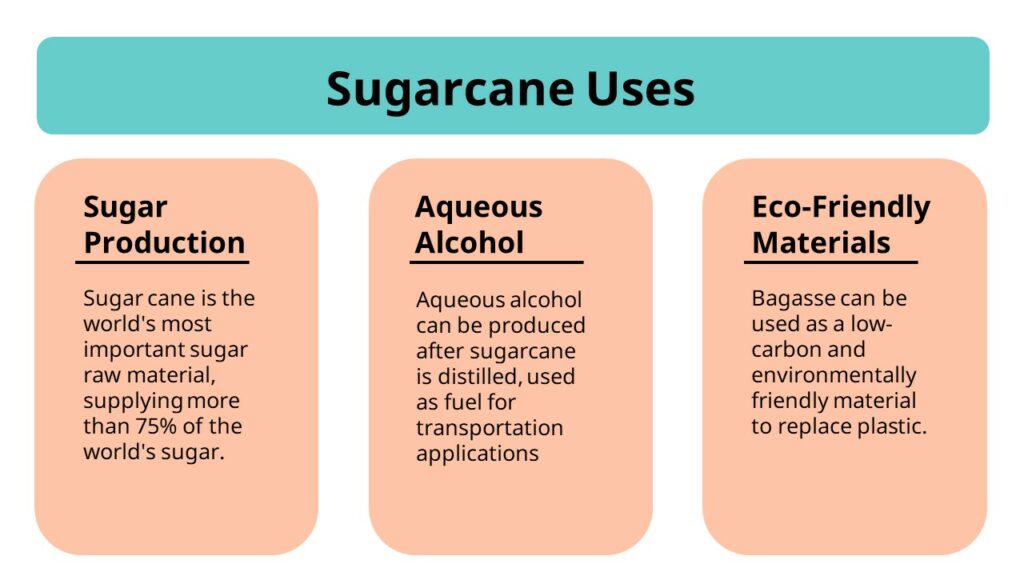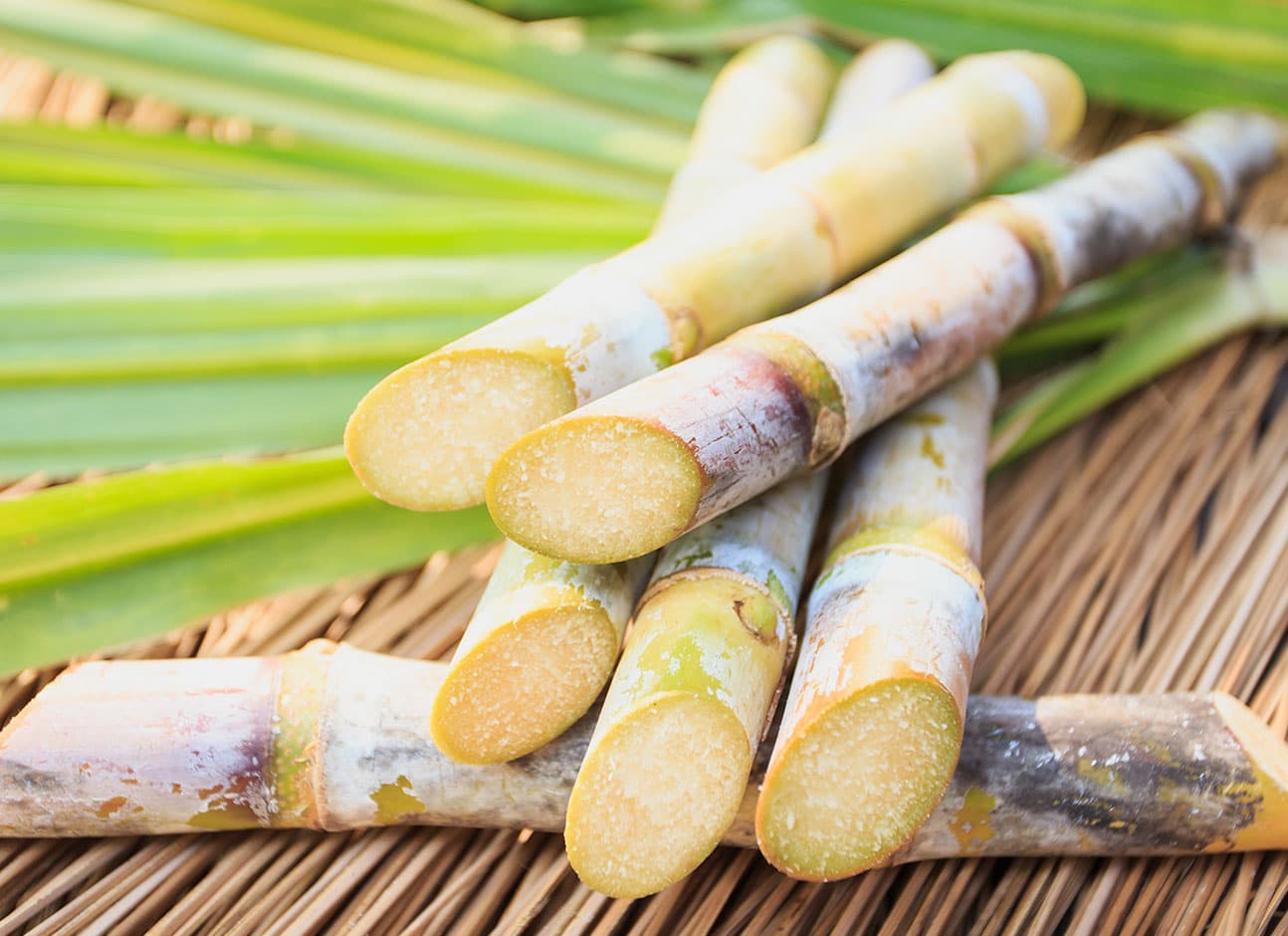Unveiling the Relevance of Sugar Canes: What Are Sugar Canes Made Use Of For in the Walking Stick Sugar Industry?
Sugar walking canes serve as the keystone of the walking cane sugar sector, mainly supplying the raw product required for sugar manufacturing. Their capacity to convert sunlight right into sucrose via photosynthesis is vital. Beyond their sweetening homes, sugar walking sticks discover utility in numerous culinary applications and emerging fields. The complete level of their impact prolongs beyond the kitchen. This conversation will certainly explore the diverse roles of sugar walking sticks in both sector and economic situation.
The Function of Sugar Canes in Sugar Production
Sugar walking sticks act as the foundational resources in the walking cane sugar market, playing an important function in the manufacturing process. These tall, seasonal turfs prosper in exotic and subtropical environments, where they absorb sunshine and nutrients to create sucrose. The harvesting of sugar walking sticks typically takes place when the plants reach maturation, maximizing their sugar content.Once harvested, the walking sticks undergo squashing to remove the juice, which has dissolved sugars. This juice is after that cleared up and focused via dissipation, changing it into a syrup. Subsequently, crystallization takes place, enabling the splitting up of sugar crystals from the remaining syrup.The drawn out sugar goes through further refining to achieve the desired purity and quality - What Are Sugar Canes Used For. As a result, the whole procedure highlights the necessary payment of sugar walking canes to sugar production, emphasizing their relevance as both a raw material and a catalyst in the manufacturing of walking cane sugar

Diverse Applications in Food and Beverage Sector
In the food and beverage industry, sugar walking stick offers several essential features. It acts not only as a main sweetener in different items yet additionally as a flavor representative that enhances taste profiles. Additionally, its components play a substantial duty in fermentation and distillation procedures, contributing to the production of liquors.
Sugar in Products

The versatility of cane sugar as a sugar makes it a staple in a vast variety of food and drink products. Widely used in baked items, it boosts the preference and structure of cakes, cookies, and breads by providing moisture and promoting browning during cooking. In beverages, cane sugar is a preferred option for sweetening teas, juices, and sodas, permitting for a balanced taste profile. Additionally, it functions as a necessary ingredient in marinades, dressings, and sauces, adding to a harmonious mix of tastes. Walking cane sugar's capability to dissolve swiftly and its constant sweet taste profile even more strengthen its role as a preferred sweetener - What Are Sugar Canes Used For. On the whole, its diverse applications underscore the integral duty of cane sugar in the culinary landscape
Seasoning Agent Use
Using walking stick sugar as a flavoring representative extends beyond its duty as a mere sugar, enhancing a selection of cooking productions. In the food and drink market, it enhances taste accounts by balancing level of acidity and bitterness, making it a crucial part in marinates, dressings, and sauces. Additionally, walking cane sugar adds to the total mouthfeel, providing a pleasurable texture in baked goods and confections. Its caramelization throughout cooking includes depth to both mouthwatering and wonderful dishes, while additionally acting as a chemical in jams and jellies. Additionally, in beverages, walking stick sugar is used to amplify tastes in cocktails and soft drinks, ensuring an extra satisfying alcohol consumption experience. This convenience underscores its importance in diverse culinary applications.
Fermentation and Purification
Walking cane sugar plays a substantial function in fermentation and purification procedures, which are crucial in creating a range of alcoholic drinks and foodstuff. Throughout fermentation, yeast transforms sugars right into alcohol and co2, a fundamental step in crafting beverages like rum and vodka. Purification even more cleanses these alcoholic combinations, concentrating flavors and increasing alcohol content. Beyond drinks, walking cane sugar is also integral in creating vinegar and particular preservative with fermentation. The versatility of walking stick sugar boosts the flavor accounts and top quality of these products, making it indispensable in the food and drink market. Its contribution not only supports traditional techniques yet also fosters advancement in crafting new flavors and experiences for customers.
Sugar Canes in Biofuel Manufacturing
As interest in renewable power resources expands, sugar canes are increasingly acknowledged for their potential in biofuel manufacturing. The biomass stemmed from sugar canes can be transformed right into ethanol, a sustainable gas choice that decreases greenhouse gas look at more info emissions contrasted to fossil gas. This procedure normally involves fermenting the sugar drawn out from the walking cane, which is after that distilled to generate high-purity ethanol ideal for use in vehicles.Additionally, sugar cane bagasse, the fibrous residue left after juice removal, can be used as a feedstock for bioenergy. It can be melted to produce vapor and power, adding to energy self-sufficiency in sugar mills. Countries such as Brazil have effectively integrated sugar walking stick biofuel right into their power policies, bring about decreased dependence on imported fuels - What Are Sugar Canes Used For. Generally, sugar canes stand for a promising method for link biofuel manufacturing, aligning agricultural practices with environmental sustainability objectives
Industrial Uses of Sugar Canes
While frequently identified mainly for sugar production, sugar canes also have varied commercial applications that extend well beyond the food sector. The coarse by-products of sugar walking cane, called bagasse, work as a valuable source in numerous industries. Bagasse is generally used as a biofuel, producing energy in sugar mills and various other facilities. Additionally, it can be refined right into paper, cardboard, and biodegradable materials, promoting sustainable practices.In enhancement, sugar walking sticks add to the manufacturing of molasses, a result utilized in the fermentation process for generating alcohol and yeast. This adaptability makes sugar canes essential to the drink and pharmaceutical sectors. Additionally, sugar walking stick extracts are employed in the cosmetics sector, supplying natural active ingredients for skincare and elegance items. On the whole, the industrial uses sugar walking canes highlight their value beyond sugar, showcasing their duty in advertising sustainability and supporting various sectors.
Economic Effect of Sugar Walking Cane Farming
The economic effect of sugar walking cane cultivation is significant, largely via task development and export profits generation. This sector not just offers employment possibility in backwoods but likewise adds considerably to nationwide economic situations by means of exports. Comprehending these elements highlights the essential function sugar cane plays in both worldwide and local markets.
Job Creation Opportunities
Often forgotten, the sugar walking cane sector plays a crucial function in job production, substantially influencing regional economic situations. The farming, harvesting, and handling of sugar cane create numerous employment possibility, from area employees to factory personnel. In lots of regions, these tasks give source of incomes for thousands of households, contributing to area stability and development. Furthermore, ancillary markets such as transport, equipment manufacturing, and retail gain from the sugar walking cane field, more broadening work read here alternatives. Seasonal job during planting and harvest times additionally sustains momentary positions, permitting workers to make income in or else lean periods. On the whole, the sugar cane industry offers as a vital economic engine, promoting job production and enhancing the lifestyle for many people and communities.
Export Profits Generation

Lasting Practices in Sugar Walking Cane Farming
While standard sugar cane farming methods have usually led to environmental degradation, an expanding number of farmers are embracing lasting approaches that focus on environmental balance. These techniques consist of plant turning, which boosts soil fertility and decreases insect break outs, and making use of organic fertilizers to lessen chemical overflow. Furthermore, some farmers are executing integrated pest monitoring techniques, which concentrate on using all-natural predators and biopesticides rather of hazardous chemicals.Water conservation strategies, such as drip watering, are also obtaining traction, enabling reliable water usage while maintaining plant wellness. Additionally, many farmers are spending in renewable resource sources, such as biomass from sugar cane waste, to power procedures and decrease their carbon footprint. These sustainable techniques not only secure ecosystems however also boost the long-term viability of sugar cane farming, ensuring that it can proceed to meet worldwide sugar needs while reducing ecological impact.
Often Asked Inquiries
Just How Are Sugar Canes Harvested and Processed?
Sugar canes are gathered making use of mechanical cutters or hand-operated methods, after that carried to manufacturing facilities. There, they go through cleaning, squashing, and extraction procedures to acquire juice, which is after that cleared up, vaporized, and crystallized into sugar.
What Is the Nutritional Worth of Sugar Cane?
The dietary value of sugar cane includes carbohydrates, primarily in the type of sucrose, in addition to trace amounts of vitamins and minerals like calcium and potassium. Nonetheless, it is reduced in protein and fat material on the whole.
Can Sugar Walking Cane Be Grown in Non-Tropical Regions?
Sugar cane can be expanded in non-tropical areas, yet it calls for specific problems such as adequate warmth, moisture, and suitable soil. Adaptation and growing techniques are necessary for effective development outside traditional tropical environments.

What Diseases and parasites Influence Sugar Cane Crops?
Bugs and conditions significantly influence sugar cane crops. Common hazards consist of the sugarcane borer, red rot, and mosaic virus, which can reduce yield and quality, demanding reliable administration practices to safeguard these vital farming resources.
How Does Sugar Cane Farming Effect Citizen Communities?
Sugar walking stick farming substantially effects neighborhood communities by giving work chances, promoting financial development, and supporting local services. Nevertheless, it can likewise lead to social difficulties and ecological problems, influencing community health and sustainability. Sugar walking sticks offer as the keystone of the walking stick sugar industry, mainly providing the raw material required for sugar production. Sugar walking sticks offer as the foundational raw material in the walking cane sugar market, playing a vital duty in the manufacturing procedure. The harvesting of sugar walking canes normally occurs when the plants get to maturation, optimizing their sugar content.Once harvested, the walking sticks undertake squashing to draw out the juice, which has dissolved sugars. While often recognized mainly for sugar manufacturing, sugar canes additionally have diverse industrial applications that prolong well beyond the food sector. As worldwide need for sugar proceeds to climb, nations rich in sugar walking stick resources take advantage of on this possibility, exporting raw sugar and refined products to worldwide markets.